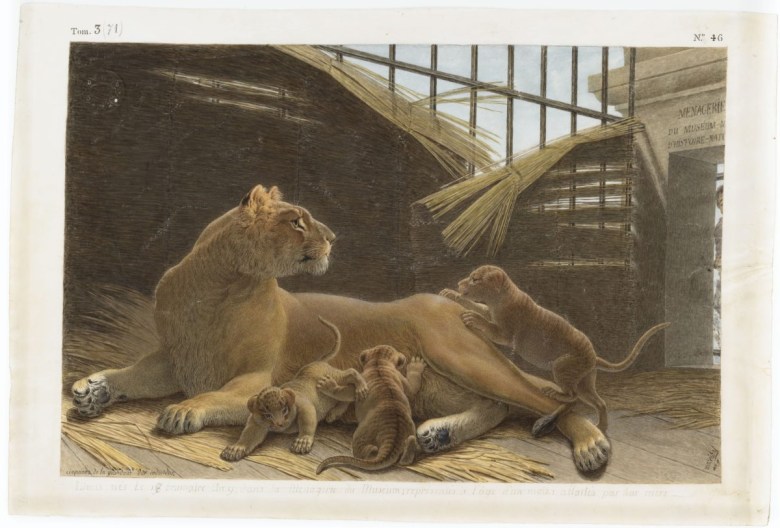After reading Myth and Menagerie, I think we might need to dedicate a whole genre to the big cats. “Lion art,” perhaps?
In 1798, celebrity Tunisian lion couple Marc and Constantine captivated the Parisian public. Local journalists published frenzied pieces on the “animals transported from Africa,” while artists like Jean-Baptiste Huet and Nicolas Maréchal drew impassioned pictures of them. For the next 30 years, natural history academics in France were imploring the military to import more African lions for scientific research and public display.

Before dying in France — and being generationally wiped out in Algeria within 60 years of the French invading — the lions thrived in the imaginations of artists like Jean-Léone Gérôme, Théodore Géricault, Rosa Bonheur, Eugène Delacroix, and Antoine-Louis Barye. In Myth and Menagerie: Seeing Lions in the Nineteenth Century (2024), Katie Hornstein examines these complex human-lion dynamics, their manifestation in powerful French institutions, and artists’ motivations for depicting these animals in her generously illustrated academic book. Hornstein urges us to view lions as “sentient beings who lived in a particular time and place, not as timeless passive objects of representation for the period’s most esteemed artists.”
Indeed, their importance to French political ambition and public experience is evidenced through records of correspondence between military officials, academics, and artists. Works of art, menagerie guides, exhibition catalogs, newspapers, and critical reviews are all included in the book. Images of leonine portraits, energetic images of lion hunts, and even lions as pets demonstrate how French imperial control of African lions perpetuated the cult of celebrity French lion hunters. A photograph of Bonheur and her lioness companion Fatma reveals the cozy proximity between the two, while also cementing the artist’s status and strength in a largely patriarchal environment.
Myth and Menagerie will interest a specialized audience — and, of course, any serious lion lover — that is ardently invested in scholarship about colonial powers developing their reputations through capture of wild creatures native to the colonized. Others, of course, can enjoy the book’s fabulous color reproductions of paintings, prints, sculptures, and sketches of the big cats.




Myth and Menagerie: Seeing Lions in the Nineteenth Century (2024) by Katie Hornstein and published by Yale University Press, is available for purchase online and in bookstores.

